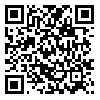Volume 1, Issue 1 And 2 (3 2005)
irje 2005, 1(1 And 2): 9-16 |
Back to browse issues page
Download citation:
BibTeX | RIS | EndNote | Medlars | ProCite | Reference Manager | RefWorks
Send citation to:



BibTeX | RIS | EndNote | Medlars | ProCite | Reference Manager | RefWorks
Send citation to:
Heshmat R, Keshtkar A, Sheykh-ol-Eslam R, Baghery M, Nadim A. Knowledge, Attitude and practice of households and health care staff towards nutrition and micronutrients (NUT-KAP) in provinces under the pilot study on flour fortification with Iron: study design and sampling method. irje 2005; 1 (1 and 2) :9-16
URL: http://irje.tums.ac.ir/article-1-200-en.html
URL: http://irje.tums.ac.ir/article-1-200-en.html
Abstract: (25175 Views)
Background and Objectives:To compare three different methods of signal detection applied to the Adverse Drug Reactions registered in the Iranian Pharmacovigilance database from 1998 to 2005.
Materials and Methods:All Adverse Drug Reactions (ADRs) reported to Iranian Pharmacovigilance Center from March 1998 through January 2005, were included in the analysis. The data were analyzed based on three different signal detection methods including Reporting Odds Ratios (PRRs), Bayesian Propagation Neural Network (BCPNN) and Reporting Odds Ratios (RORs). Signals detected by each method were categorized based on the number of reports per drug-adverse event combination, severity of the event and labeled or unlabeled ADRs. The methods applied to signal detection were then compared in recognizing different types of adverse events.
Results: A total of 6353 cases of ADR reports, describing 11130 reactions, were reported to Iranian Pharmacovigilance Center (IPC) during the study period. The dataset involved 4975 drug-event combinations, which were assessed for detecting signals. The counts of drug-event combinations was 1, 2 and 3 or more for 3470, 727 and 779 combinations, respectively. There were 500 drug items responsible for 468 reaction terms in the database. According to PRR and 95% Confidence Interval, there were 2838, 872 and 488 drug-event combinations known as a signal for the pairs with the reporting frequency of ³1, ³2 and ³3 reports, respectively. The signals detected with the criteria of PRR³2, c2³4 were 2930, 872 and 480 for the pairs with the same reporting frequencies. Estimates of RORs and the 95% Confidence Interval showed that 2722, 862 and 481 drug-event combinations were detected to be signal for the pairs with the reporting frequency of ³1, ³2 and ³3 reports, respectively, while measuring IC and IC-2SD detected 1120, 378 and 235 cases for the same reporting frequencies. There were 234 signals detected by all three methods.
Conclusion: Despite the similarities between data mining methodologies for signal detection, there are differences in the numbers of signals detected by each method. The study findings suggest that quantitative signal detection methods should be added to the routine Pharmacovigilance activities in Iran and the trends for quantitative measures over time should be monitored.
Results: A total of 6353 cases of ADR reports, describing 11130 reactions, were reported to Iranian Pharmacovigilance Center (IPC) during the study period. The dataset involved 4975 drug-event combinations, which were assessed for detecting signals. The counts of drug-event combinations was 1, 2 and 3 or more for 3470, 727 and 779 combinations, respectively. There were 500 drug items responsible for 468 reaction terms in the database. According to PRR and 95% Confidence Interval, there were 2838, 872 and 488 drug-event combinations known as a signal for the pairs with the reporting frequency of ³1, ³2 and ³3 reports, respectively. The signals detected with the criteria of PRR³2, c2³4 were 2930, 872 and 480 for the pairs with the same reporting frequencies. Estimates of RORs and the 95% Confidence Interval showed that 2722, 862 and 481 drug-event combinations were detected to be signal for the pairs with the reporting frequency of ³1, ³2 and ³3 reports, respectively, while measuring IC and IC-2SD detected 1120, 378 and 235 cases for the same reporting frequencies. There were 234 signals detected by all three methods.
Conclusion: Despite the similarities between data mining methodologies for signal detection, there are differences in the numbers of signals detected by each method. The study findings suggest that quantitative signal detection methods should be added to the routine Pharmacovigilance activities in Iran and the trends for quantitative measures over time should be monitored.
Type of Study: Research |
Subject:
General
Received: 2005/07/8 | Accepted: 2005/07/18 | Published: 2013/09/8
Received: 2005/07/8 | Accepted: 2005/07/18 | Published: 2013/09/8
| Rights and permissions | |
 |
This work is licensed under a Creative Commons Attribution-NonCommercial 4.0 International License. |





